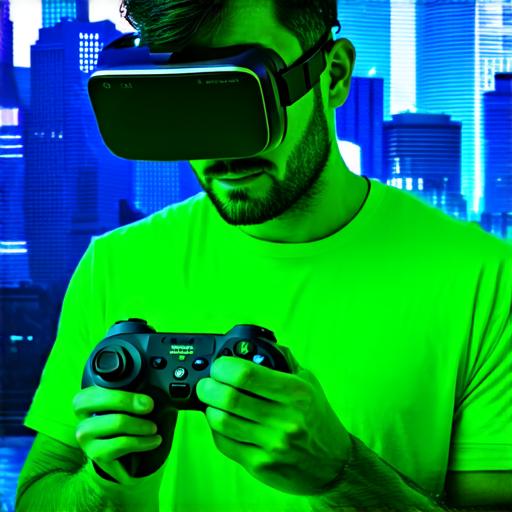Introduction
Augmented reality (AR) technology has been around for some time now and has significantly impacted various industries such as marketing, education, healthcare, etc. But did you know that AR has also transformed the gaming industry? The integration of AR in gaming has led to a new era of interactive and immersive experiences. In this article, we will explore how augmented reality is used in gaming and its potential impact on the future of gaming.
What is Augmented Reality?
AR is an enhanced version of reality that overlays digital information onto the real world. It uses a device’s camera to capture the real-world environment and then adds computer-generated graphics, sounds, and other interactive elements to create a new reality. AR has been used in gaming to create immersive and interactive experiences for players.
How is Augmented Reality Used in Gaming?
-
One of the most popular uses of AR in gaming is in mobile games. Games like Pokémon Go, Ingress, and GeoAR have become household names due to their use of AR technology. These games overlay digital elements onto the real world, allowing players to interact with virtual objects and creatures in a way that was not possible before.
-
Board Games: Augmented reality has also been used in board games to create interactive and immersive experiences for players. Games like Catan Universe and Dice Masters use AR technology to bring physical game boards to life, allowing players to interact with digital elements on top of the physical game pieces.
-
Fashion Design: AR has also found its way into the fashion industry, where designers are using it to create virtual try-on experiences for their customers. This allows customers to see how a particular outfit would look on them before they make a purchase, leading to increased customer satisfaction and loyalty.
-
Training and Education: Augmented reality is also being used in training and education to provide immersive learning experiences. For example, medical students can use AR technology to practice surgeries in a virtual environment, while history students can use AR to explore ancient ruins and historical sites.
-
Advertising and Marketing: Finally, AR has also found its way into advertising and marketing, where brands are using it to create interactive and engaging experiences for their customers. For example, Nike’s “Reaction Store” uses AR technology to allow customers to customize their shoes in real-time, while Coca-Cola’s “Share a Coke” campaign used AR to personalize Coke bottles with popular names and hashtags.
Potential Impact of Augmented Reality on Gaming Industry
The integration of AR technology in gaming has the potential to revolutionize the industry. Here are some ways that AR can impact the future of gaming:
-
Increased Engagement: AR technology can create more engaging and interactive experiences for players, leading to increased retention rates and player loyalty. This is particularly important in a crowded gaming market where players have so many options to choose from.
-
New Forms of Gameplay: AR technology can also enable new forms of gameplay that were not possible before. For example, games that combine physical and virtual elements could become more popular, as players look for unique and immersive experiences.
-
Increased Accessibility: AR technology can make gaming more accessible to people with disabilities, who may not be able to physically interact with traditional gaming hardware. This could lead to a larger and more diverse player base.
-
New Business Models: Finally, AR technology could also lead to new business models in gaming, such as subscription-based gaming or pay-to-play models. As players become more willing to pay for unique and immersive experiences, game developers may be able to monetize their games in new ways.
